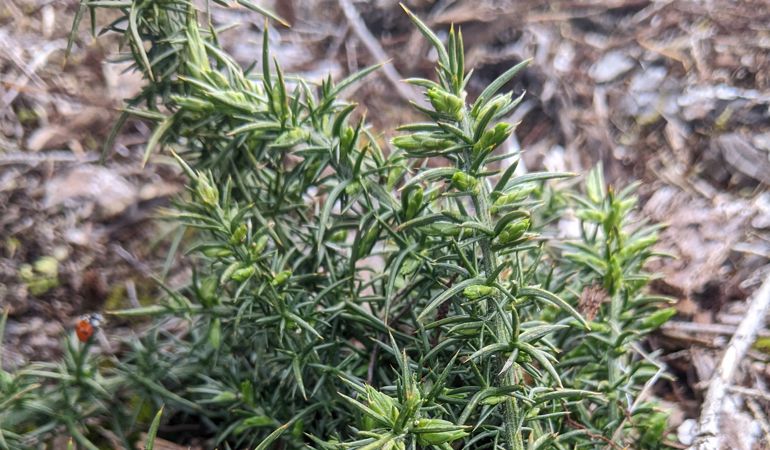Rare heathland regenerating after trees felled in Hensol forest

Work is underway to restore a rare habitat in Hensol forest in the Vale of Glamorgan.
Lowland heathland is a rare and threatened habitat mainly found in north-west Europe and characterised by heathers, gorse and grasses.
The UK has lost 80% of this important habitat during the last two centuries, but still holds 20% of the world’s lowland heathland.
Lowland humid heath, which develops in milder and wetter environments, is only found in south Wales and south-west England. It is home to some nationally rare plants, such as Green-ribbed sedge and Bristle bent grass, and supports many insects, reptiles and ground-nesting birds.
Unfortunately this special habitat is threatened by a range of factors, such as development, recreation, unsuitable site management practices, wildfires and pollution.
When an area of Hensol forest, which had been planted as a commercial forest to replenish timber stocks after the first and second World Wars, was felled in 2020 due to infected larch trees, the landscape started to naturally regenerate.
Officers from Natural Resources Wales (NRW) who manage Hensol forest found rare lowland heathland plants growing, some from seeds in the soil that could have been dormant for more than 60 years.
After finding these rare plants growing, the officers decided to restore the former heathland instead of replanting the area with trees. They have removed tree felling brash and will manage scrub until the heathland plants are more established.
Liz Hancocks, Senior Officer - People and Places, from NRW said:
“Previous habitat loss has contributed to the nature emergency we’re in today. We need to make sure the habitats we manage for our wildlife and communities are supporting biodiversity and resilient to climate change.
“If we want to continue to see lowland heathland as part of a diverse landscape in Wales, we need to manage and restore areas like this in Hensol forest and on the Welsh Government Woodland Estate.
“Our experts believe that with careful management and allowing the dormant seedbed to come to life, the heathland will recover over the coming years, creating a vital habitat for some of our rarest wildlife.
“It is a small but important contribution to nature’s recovery in Wales.”
The work in 2022/23 was funded by Welsh Government’s Nature Networks fund - a three-year programme which aims to address the nature emergency in Wales through increasing biodiversity, improving the condition of protected sites and enhancing the resilience and connectivity of habitats and species.
For more information visit Nature Networks.
